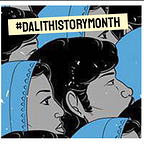The Bene Ephraim of Andhra Pradesh
by Anita Das
“Today in #DalitHistory, we highlight a community of Dalit Jews called the Bene-Ephraim, in the Guntur District of Andhra Pradesh in India.
The Bene Ephraim assert that they were descended from one of the one of the ten Jewish tribes driven into exile after the collapse of the Jewish kingdom in 586 B.C.E. Members of this tribe are said to have migrated through Persia to becoming teachers in the Ashokan capital of Magadha, which they remember to be the etymological root of their Caste name, “Madiga”. War with migrating Aryan communities is then said to have pushed these communities south to present day coastal Andhra Pradesh. During this period, it is said that the members of this lost tribe, slowly grew isolated from their true Jewish religious tradition.
Locals in the area, estimate that about 250 members began to live and practice Judaism openly in the late 1980’s after finding solace in coming out of Christianity and embracing what they perceived was their true ethnic and historically contiguous religion.
“Our elders used to talk about our Jewishness at home,“ says Sadok Yacobi. “My father and grandfather used to tell us about the Torah and the difference between Christianity and Judaism,“ he says, adding, “Like the Jews, the Madigas also bury their dead and eat beef.”
Madigas are Dalits who have traditionally been associated with leatherwork, manual scavenging and agricultural labour in the states of Andhra, Telangana, Tamil Nadu and Karnataka.
Although, much of the origin story is not anthropologically verifiable, for this community of Jews, their religion in the context of their Caste and social location in a Brahmanical society and represents a Jewish liberation theology.
It is for them, an opportunity to escape their Caste oppression through a self-defined, self-owned identity of antiquity, pride and revival.
